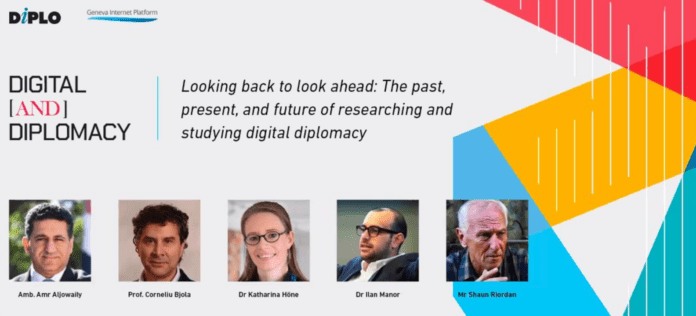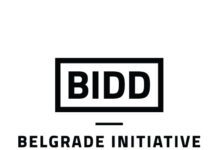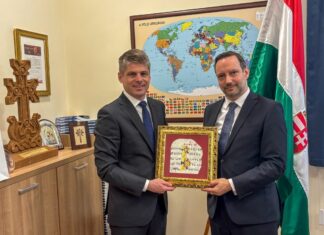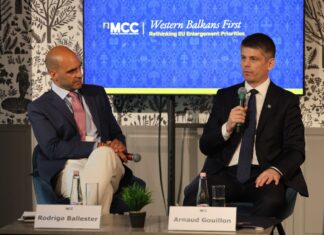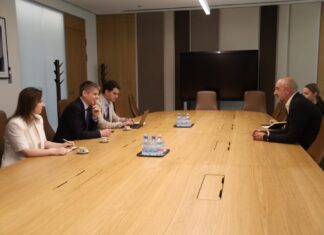Last week I had the opportunity to partake in a conference organized by the Diplo Foundation asking- what do we mean when use the term “digital diplomacy”. During the conference I was asked three questions on the past, present and future practice of digital diplomacy. This post includes my answer and analysis.
Q: How have areas of focus and priorities in digital diplomacy changed over time and what are some of the key issues going forward?
I think there are four main issues that will shape the practice of digital diplomacy in the coming years. First, is managing the relationship between nations states and big tech. Many have talked about the need to regulate tech companies. According to the Economist, data is the new oil. And just as the US regulated and broke the monopoly of Standard Oil, it may break the monopoly of Facebook. Yet at he the global level, there is need for cyber accords that create an international normative framework that regulates big tech companies and that regulates governments’ use of big tech towards nefarious activities. This issue entails a host of policy areas ranging from international law and human rights to digital sovereignty. Notably, advancing such a normative framework will only be possible if authoritarian states such as China are part of the process from its very beginning.
Second, I believe that diplomats must anticipate and prepare for the next wave of digitalization. Diplomats often lag behind private entities in embracing and leveraging digital technologies. Diplomats must now begin preparing for the next wave of digitalization that will include virtual reality, augmented reality and even holograms. Diplomats should work with local tech companies to examine how each technology may be used to advance diplomatic goals. But there is also a need to understand how these technologies will challenge diplomacy. Deep fake videos or fake virtual environments, may warp public opinion and limit digital users’ ability to make sense of their world.
Third, there is a risk that diplomats will come to view the public as ‘a problem’. Diplomats already view digital users as susceptible to digital manipulation and the public thus becomes a problem as its digital surroundings must be secured by diplomats. Yet viewing the pubic as a problem may undermine the basis of relationships between diplomats and publics which are supposed to be rooted in facing shared challenges together. In other words, viewing the public as a problem may undermine decades of public diplomacy activities.
A fourth key issue deals with trust in diplomacy and diplomatic practices. In recent years, the international system has become increasingly paralyzed. The UN has been unable to end the Wars in Syria and Yemen. The OSCE has been unable to reduce tensions in Crimea while the EU is struggling to reach a consensus on foreign policy issues. Not to mention Covid19 which has led a resurgence of national borders, national policies and critique of multilateralism. Digitalization can help restore faith in the multilateral system through increased transparency of diplomatic deliberations, offering digital publics access to diplomatic negotiations once they have concluded and enabling digital users to take an active part in diplomatic process. The ITU now crowdsources whitepaper with digital users from across the world. This is a first step in an important direction.
Q: How do practitioners begin their journeys in digital diplomacy?
I think it is crucial to understand the link between digital diplomacy and the digital society. MFAs are social institutions and diplomats are social beings. Events that impact society as a whole impact diplomats and it is through diplomats that these events permeate into MFAs giving rise new norms, values and working routines
For instance, when societies viewed social media as a positive force, and the harbinger of an Arab Spring, diplomats used social media to create ties with foreign populations. Once societies came to regard social media as aa menace that creates echo chambers of disinformation, diplomats created big data unites to track and neutralize fake social media accounts
Digitalization often begins in personal life and with societal shifts. For instance, Ambassadors in Geneva first used WhatsApp groups to coordinate family holidays. They soon realized that they could also use WhatsApp to coordinate diplomatic activities in UN bodies. The EU now operates an active WhatsApp group in Geneva used to coordinate action, draft resolutions and rally support at UN forums. Similarly, diplomats in the UK began using Facebook to maintain ties with distant friends. They soon realized they could use Facebook to maintain ties with distant Diasporas.
The interaction between the digital society, and the practice of digital diplomacy, can be a double edged sword. Diplomats that sit at the dinner table, and see each family member immersed in a different screen, may come to view digital tools are disengaging leading them to prefer offline diplomacy.
At the level of foreign ministries digitalization begins due to a myriad of factors. The US State Department migrated online as part of government-wide process initiated by Barack Obama who urged ministries to interact with stakeholders online. New Zealand’s MFA first migrated online following the activities of close allies such as the US and the UK. Poland sought to leverage digital tools to manage its national image and distance itself from the atrocities of World War 2 while Kenya’s ministry hoped to implement a digital Diaspora policy.
Q: How is digital diplomacy practiced and what changes in practice can we observe over time?
This is why I prefer the term the digitalization of diplomacy over the term digital diplomacy. Digitalization is a long term process in which offline events shape diplomats’ use of digital technologies. Between 2008 and 2011 diplomats begun experimenting with virtual diplomacy given the assertion that virtual settings can help diplomats overcome limitations of traditional diplomacy. For instance, in 2008 Sweden launched its virtual Embassy on Second Life. This Embassy could be visited by any computer user in the world and thus overcome limitations of time and space. In 2011 America launched a virtual Embassy used to overcome lack of physical, diplomatic presence in Teheran.
Then came the Arab Spring which forced diplomats to adopt social media in order to interact with online users and monitor online conversations so as to anticipate future shocks to the international system. The Russian digital interventions in Brexit and the 2016 US elections saw diplomats embrace big data and network analysis to map and neutralize disinformation campaigns. The UK Foreign Office created a big data unit tasked with disabling fake social media accounts; the Israeli MFA opened an algorithm unit writing code to stem flow of hate speech online, the Lithuanian MFA created monitoring units used to identify and counter disinformation campaigns in the Baltics while Denmark appointed an Ambassador to Silicon Valley.
Covid 19 has again altered digital practices as diplomats increasingly combine offline diplomacy with virtual summits using Zoom or similar applications. To conclude, digital practices change due to offline events.
But, digitalization is also a result of trial and error. Practices change following successes and failures. Some British Ambassadors were very successful in using Twitter to amass hundreds of thousands of followers. In turn, the Foreign Office began training Ambassadors in the use of social media. Other countries created social media empires spanning many platforms. But they were soon overwhelmed by the need to create content for each platform. This led to a more strategic use of digital platforms. In many MFAs, Facebook is regarded as an elite-to-public medium used to create ties with foreign citizens and Diasporas. Twitter is an elite-to-elite medium used to interact with policy makers and journalists. The practice of digital diplomacy has thus changed/ or evolved due to external shocks as well as trial and error.


